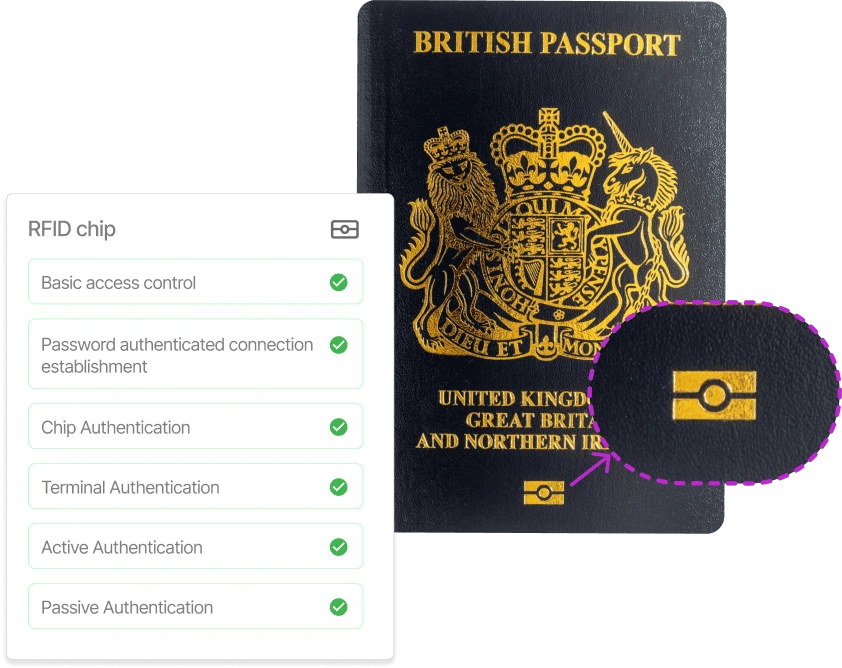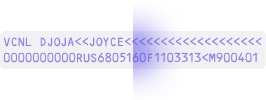

Industries such as banking, aviation, and e-governance demand solutions that not only guarantee data accuracy but also deliver results in real time. This is where modern Passport Reader Software comes into play, and more specifically, a smart Passport SDK Software built for performance.
But how fast can a smart passport reader process an identity document like an e-Passport or e-ID?
Inside the Process: How a Smart Passport SDK Rapidly Extracts and process Data?
1. NFC-Based Passport Reading

Using Near Field Communication (NFC), the SDK reads the encrypted chip embedded in electronic documents. This chip stores personal data such as the holder’s name, photo, biometric identifiers, and issuing authority. The process begins the moment the document is placed near a compatible device no manual input required.
2. Real-Time Validation & Verification
Once the chip data is retrieved, the SDK performs real-time verification. It checks cryptographic signatures and ensures the data has not been altered, validating the authenticity of the document within milliseconds.
3. MRZ Recognition and OCR Data Extraction

The Machine Readable Zone (MRZ) is then scanned using Optical Character Recognition technology . Key information like the passport number, nationality, date of birth, and expiration date is quickly extracted and structured for backend processing.
4. Automated Document Classification
The SDK intelligently detects the type of document passport, ID, or driving license and identifies the issuing country, all without user assistance. This is made possible through AI-powered image processing and a global document template database.
5. Liveness Detection and Anti-Fraud Checks
To prevent spoofing or the use of tampered images, our passport reading software also incorporates liveness detection. It verifies visual security features like holograms, microprints, and embedded patterns to confirm the document is genuine and physically present.
6. Cross-Platform Integration
Designed for versatility, the SDK supports mobile apps, web-based platforms, and desktop systems, enabling quick deployment across multiple user environments.
How Quick Is the Passport Reader Software in extracting and processing data?
Speed is the main criteria where passport reader software really excels. Here's a quick summary of average processing times:
- NFC Data Reading: ~1–2 seconds
- Validation and Verification: greater than 1 second
- MRZ Extraction: 0.5–1 second
- Classification & Liveness Detection: 1–1.5 seconds
- Total Processing Time: 2 to 4 seconds
This almost lightning-fast performance makes it perfect for customer onboarding, airport check-ins, border security, or any workflow that requires swift identity validation.
Future of Passport Reading Software Technology
As we look ahead, the future of passport reading software technology is shaped by artificial intelligence, machine learning, and mobile-first design. Emerging trends include:
- AI-driven fraud detection algorithms
- Cloud-based passport reading APIs for decentralized access
- MRZ Extraction: 0.5–1 second
- Integration with digital identity wallets and blockchain
Introducing Pixl.ai's High-Speed Passport SDK of future
At Pixl.ai, our advanced Passport Document Reader SDKs is designed to handle the complete document verification process from scanning to validation in a matter of seconds. Using technologies like NFC, real-time OCR, and AI-based classification, our passport SDK software ensures seamless and secure authentication of e-Passports, electronic IDs, and e-Driving Licenses.
At Pixl.ai, our advanced Passport Document Reader SDKs is designed to handle the complete document verification process from scanning to validation in a matter of seconds. Using technologies like NFC, real-time OCR, and AI-based classification, our passport SDK software ensures seamless and secure authentication of e-Passports, electronic IDs, and e-Driving Licenses.
Final Thoughts
If your company needs a passport SDK software that strikes the right balance between speed, precision, and security, Pixl Passport SDK is the trusted option. It puts the best of passport document reader technology NFC, OCR, liveness detection, and AI-based classification together to validate passport information securely in less than four seconds. Step into the future of identity authentication with Pixl.ai Passport Reader an intelligent, fast, and secure solution designed for the next generation of digital processes.